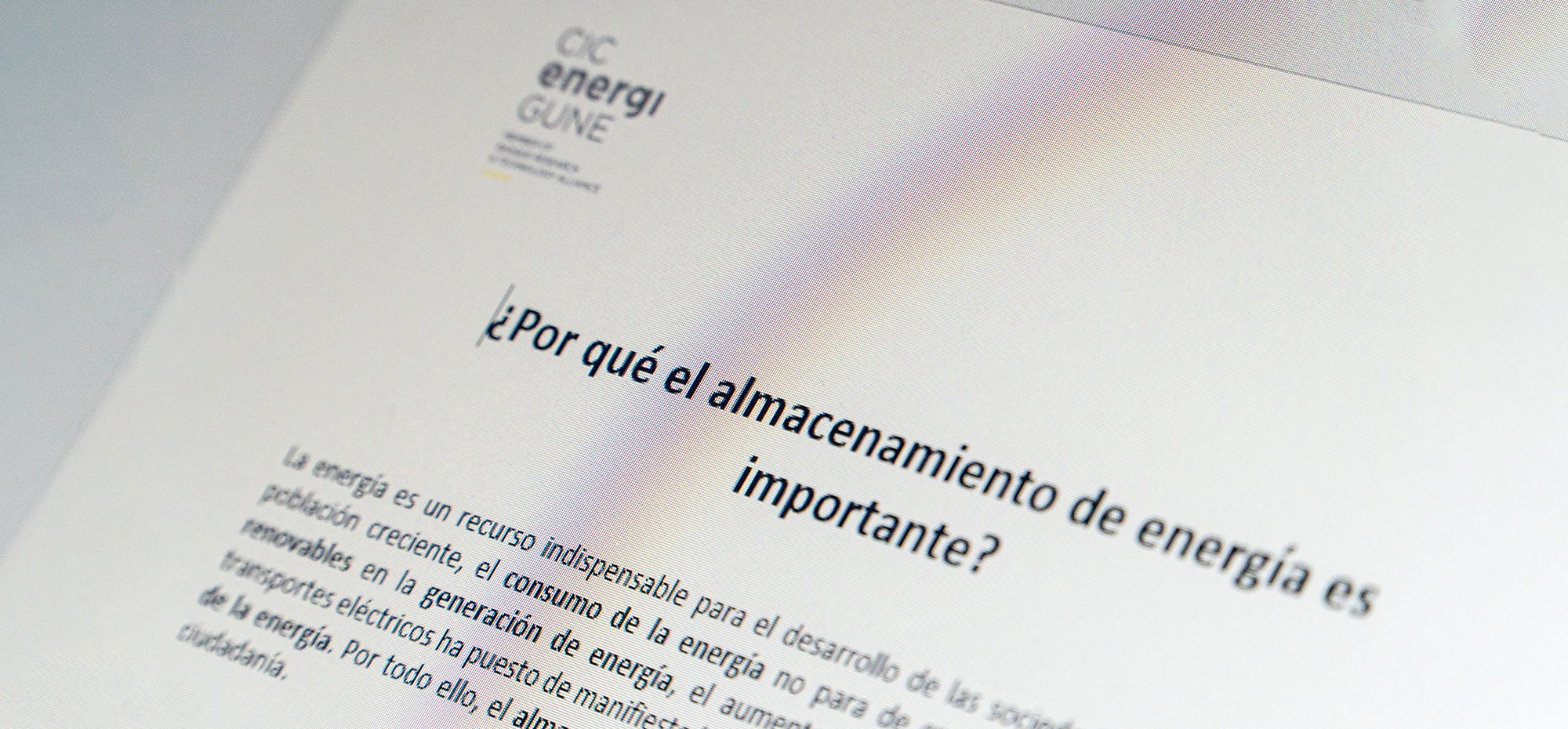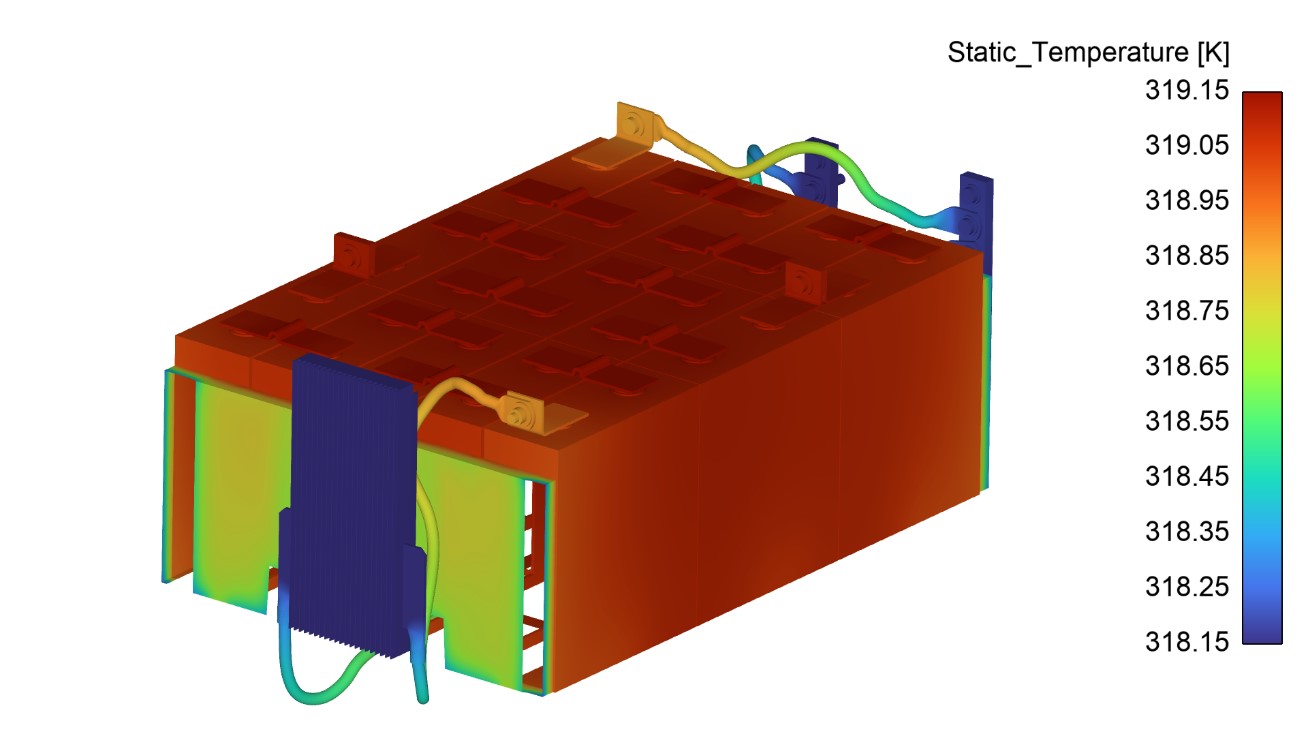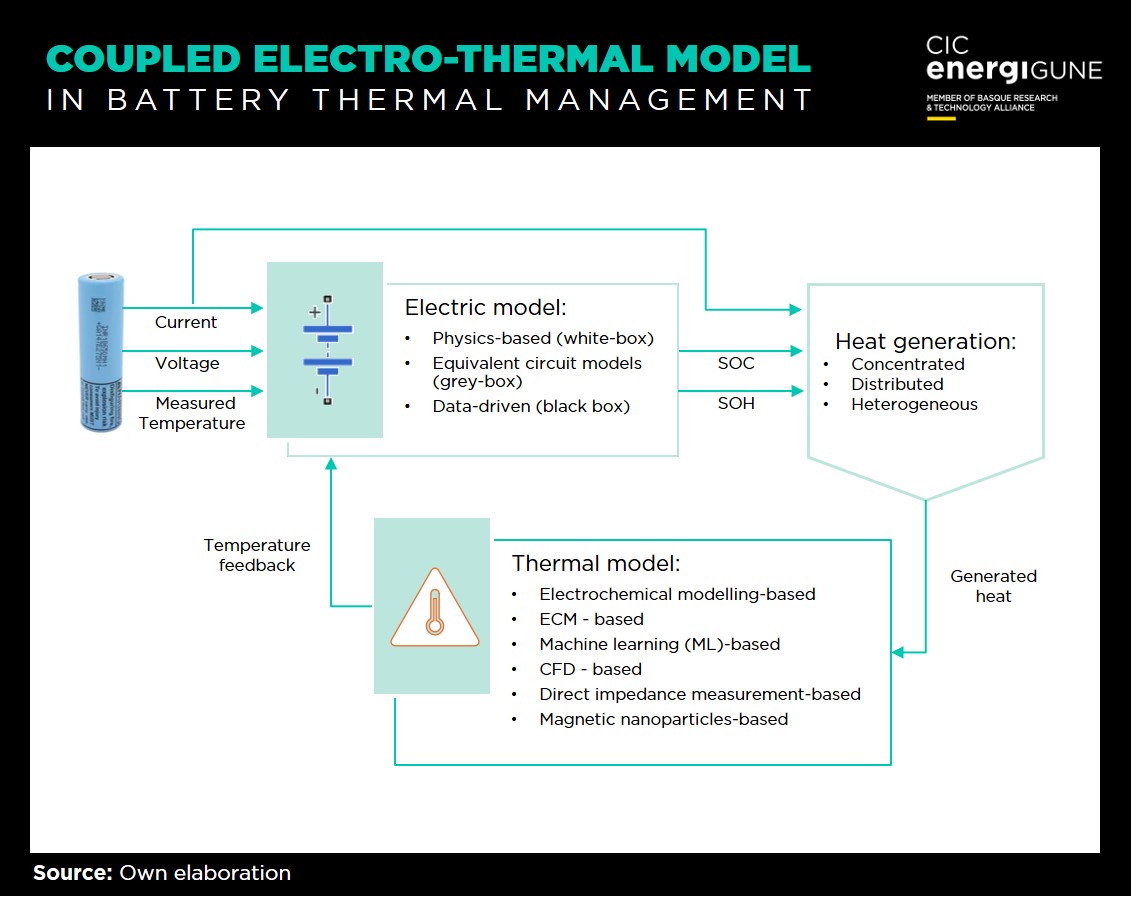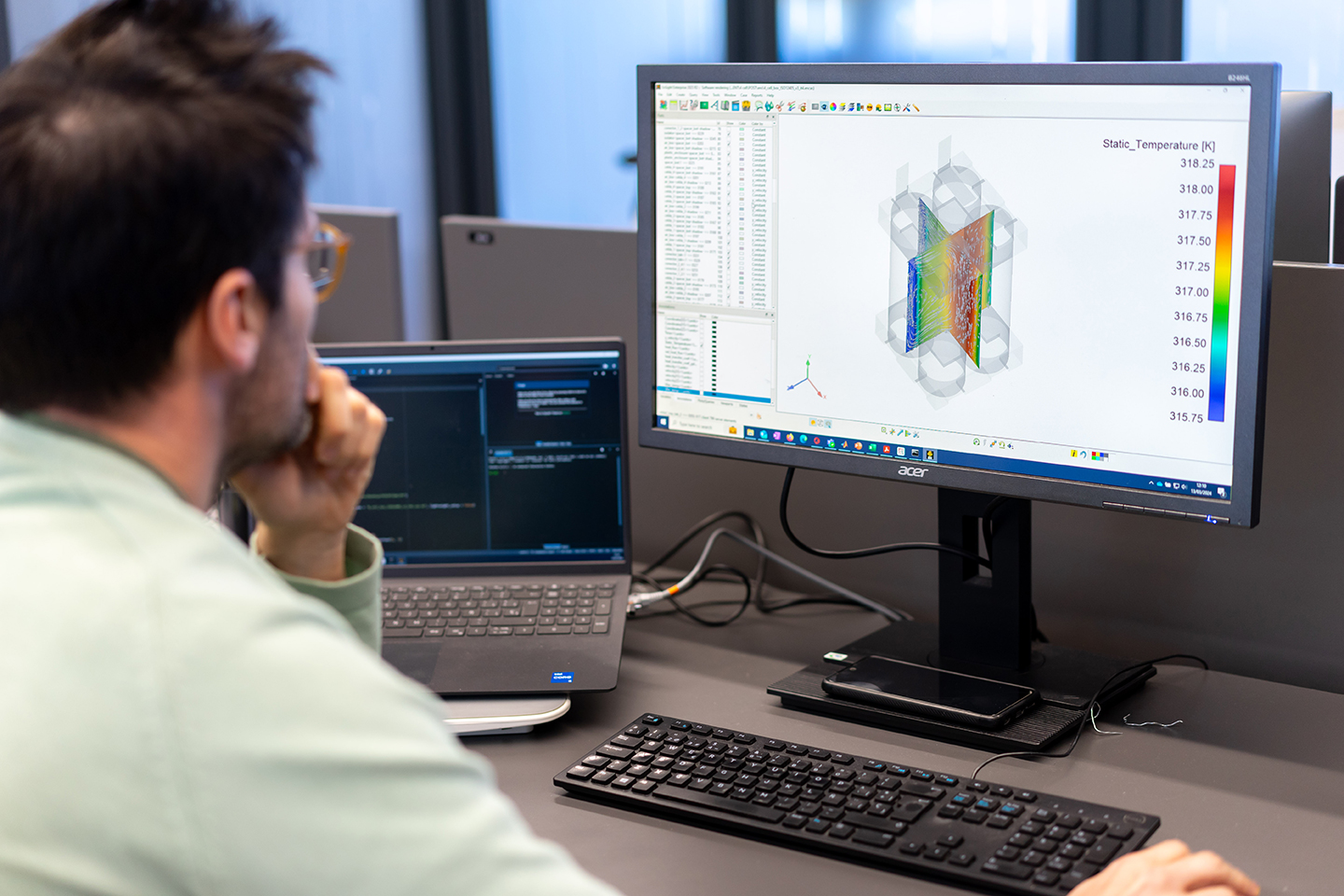With regard to the mobility sector, electrochemical batteries are currently the energy storage technology that can decarbonize road transport, as states the State of the Art Battery Technology for Automotive Application report of the prestigious IEEE Transportation Electrification Council.
One factor limiting the development of electric vehicles is the severe impact of temperature on the performance of batteries. An inappropriate operating temperature can cause premature ageing, capacity fade and even have fatal consequences if thermal runaway is triggered. To prevent accelerated battery deterioration, the BTMS (Battery Thermal Management System) goal is to ensure that the cells operate under the optimum temperature conditions, generally between 15 and 35 ◦C, for the case of Li-ion batteries (LIBs). Nevertheless, the common driving cycles subject batteries to a highly dynamic power environment that hinders temperature management.
It is here where a thermal modeling strategy becomes relevant. LIBs are governed by complex electrochemical processes that emit heat. This results in a temperature distribution in the battery over time, which allows to adjust the corresponding BTMS. However, the electric field and the thermal fields are interrelated with different phenomena influencing each other, and therefore, the resulting temperature distribution must also feed the electric model in a closed loop continuously. Overlooking these effects may lead to oversizing the design of the BTMS.
Within this challenge, the Thermal Storage (TES) area of CIC energiGUNE, in collaboration with Electrochemical Storage (EES) area, has developed a comprehensive methodology for estimating the heat flux generation of cylindrical cells under highly dynamic loading conditions.
Thermal modeling strategy
Electrochemical cell temperature estimation techniques consist of the use of two models, an electric model, and a heat transfer model. In other words, a coupled electro-thermal model is required.
The electric model deals with understanding the distribution and behavior of electric potential within the battery. This model is crucial for understanding the electrochemical reactions happening within the battery, which directly affect its performance and temperature. Factors such as current flow, internal resistance, and electrochemical reactions contribute to the generation of heat within the battery.
Based on modeling strategy, these models can be classified into three groups, physics-based electrochemical models (also known as white-box models), grey-box models, and data-driven or black-box models.
|
Electric model
|
White box
|
Grey box
|
Black box
|
|
Theory
|
Derived using 1st principle laws
|
Derived based on physical knowledge, while the model parameters are estimated using test data
|
Data-driven statistical estimation theory
|
|
Characteristics
|
Parameters obtained from experiments and physical properties of the system
Significant knowledge but high computational cost
|
Computational time is relatively less than the time required by the electrochemical model
Most efficient approach in real-time thermal management applications
|
Give accurate temperature prediction (provided that sufficient data are available for model training)
Loss of physical relevance of model parameters
|
|
Examples
|
1D, 2D, 3D electrochemical models
|
Reduced-order modeling (ROM)
Frequency based method
Lumped equivalent circuit modeling (LECM)
|
Artificial neural networks
|
With the advent of the big data era, physical approaches combined with data-driven approaches are likely to become more common. While the combination of physics-based and data-driven techniques in an accurate single model solves its challenges, many real-time thermal management applications still rely on Equivalent Circuit Models (ECMs). The ability of ECMs to measure and predict cell voltages by optimizing models and parameter values lends itself well to the design of control algorithms in BTMS.
The thermal model focuses on the distribution and dissipation of heat within the battery. Reliable assumptions about how heat is transferred through the different components of the cell (concentrated, distributed, or heterogeneous models) within the battery are essential for managing its temperature, which in turn affects its performance, safety, and longevity.
Among the different temperature estimation techniques, simpler heat capacitor–resistor-based models use the analogy between electrical and thermal systems. Also known as lumped parameter models, only average temperatures can be predicted, ignoring that battery temperature distribution may not be spatially uniform. To overcome this limitation, three-dimensional (3D) CFD thermal models can address complex geometric systems.
Two-way coupling
Due to the reciprocal interconnection of electric and thermal models, some kind of coupling is necessary. One-way coupling between ECM and CFD, for instance, neglects the effects of the temperature variation in the CFD heat transfer model on the heat flux emitted by the cell. This approach is commonly used to simplify the computational process.
The Thermal Storage (TES) area of CIC energiGUNE has validated a two-way coupled model based on a co-simulation approach over a 18650 Li-ion battery. This models consists of a 1D lumped model (ECM) developed in Matlab-Simulink® with a 3D CFD thermal model in Ansys-Fluent®, forming a feedback loop.
Simulink® is a popular block diagram environment used to design systems. It provides design tools and parametrized models under the Simscape Battery toolbox for modeling batteries and testing BTMS control algorithms. This facilitates the implementation of a highly dynamic charge and discharge test sequence, what turns in a more realistic operating condition than the commonly used constant charge/discharge cycling.
On the other hand, the advanced physics modeling capabilities of Ansys-Fluent include the solution of heat transfer mechanisms such as conduction, convection, and radiation with enhanced accuracy compared to lumped parameter models, where estimations to model these phenomena are required.
Combining ECM models with a 3D CFD thermal model becomes a powerful tool to represent complex scenarios that impact the BTMS design and can also provide better prediction of battery life and performance.
The continuous iterative process between experimental testing and simulation modeling will lead to the next generation BTMS and ultimately contribute to the sustainable advancement of energy storage technologies.











